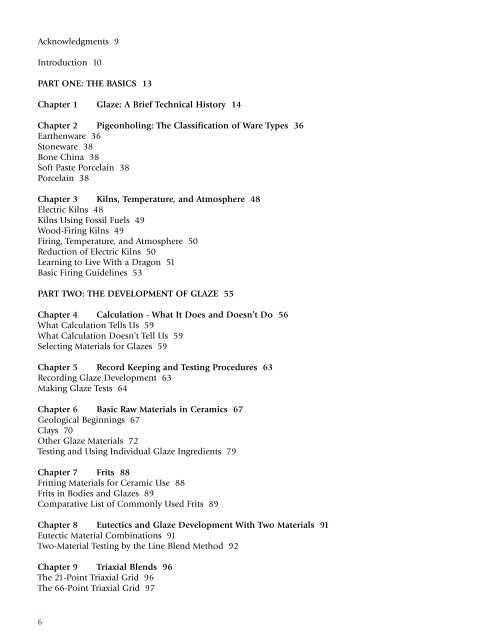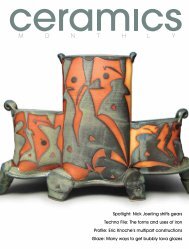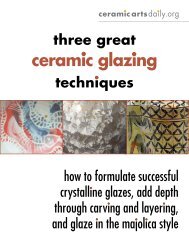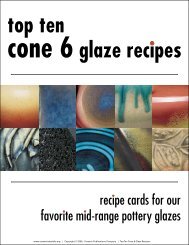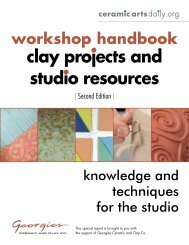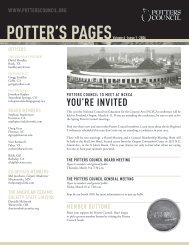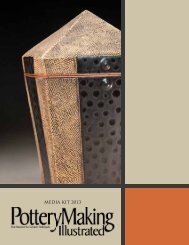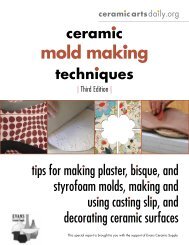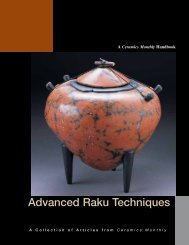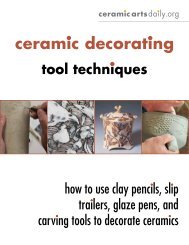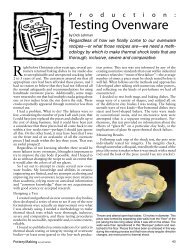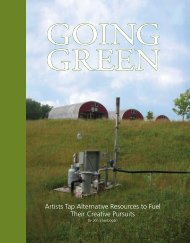Robin HoppeR - Ceramic Arts Daily
Robin HoppeR - Ceramic Arts Daily
Robin HoppeR - Ceramic Arts Daily
Create successful ePaper yourself
Turn your PDF publications into a flip-book with our unique Google optimized e-Paper software.
Acknowledgments 9<br />
Introduction 10<br />
pART one: THe bASiCS 13<br />
Chapter 1 Glaze: A brief Technical History 14<br />
Chapter 2 pigeonholing: The Classification of Ware Types 36<br />
Earthenware 36<br />
Stoneware 38<br />
Bone China 38<br />
Soft Paste Porcelain 38<br />
Porcelain 38<br />
Chapter 3 Kilns, Temperature, and Atmosphere 48<br />
Electric Kilns 48<br />
Kilns Using Fossil Fuels 49<br />
Wood-Firing Kilns 49<br />
Firing, Temperature, and Atmosphere 50<br />
Reduction of Electric Kilns 50<br />
Learning to Live With a Dragon 51<br />
Basic Firing Guidelines 53<br />
pART TWo: THe DeVeLopMenT oF GLAZe 55<br />
Chapter 4 Calculation - What it Does and Doesn’t Do 56<br />
What Calculation Tells Us 59<br />
What Calculation Doesn’t Tell Us 59<br />
Selecting Materials for Glazes 59<br />
Chapter 5 Record Keeping and Testing procedures 63<br />
Recording Glaze Development 63<br />
Making Glaze Tests 64<br />
Chapter 6 basic Raw Materials in <strong>Ceramic</strong>s 67<br />
Geological Beginnings 67<br />
Clays 70<br />
Other Glaze Materials 72<br />
Testing and Using Individual Glaze Ingredients 79<br />
Chapter 7 Frits 88<br />
Fritting Materials for <strong>Ceramic</strong> Use 88<br />
Frits in Bodies and Glazes 89<br />
Comparative List of Commonly Used Frits 89<br />
Chapter 8 eutectics and Glaze Development With Two Materials 91<br />
Eutectic Material Combinations 91<br />
Two-Material Testing by the Line Blend Method 92<br />
Chapter 9 Triaxial blends 96<br />
The 21-Point Triaxial Grid 96<br />
The 66-Point Triaxial Grid 97<br />
6


